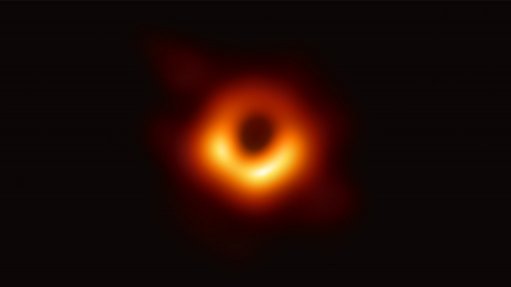
The M87 Black Hole
Photo by: Event Horizon Telescope
Astronomy in general, but radio astronomy in particular, can be a very powerful force to attract and hold public attention and to promote education. So argued Italian astrophysicist Dr Tiziana Venturi in a lecture co-hosted by the Academy of Science in South Africa and the South African National Space Agency in Pretoria/Tshwane on Monday.
Every body, she explained, because it has temperature, emits radiation. This is the “so-called black body radiation”. In astronomy, the most famous black body radiation is the Cosmic Microwave Background, which is the radiation left over from the Big Bang – the birth of our universe.
However, at first, radio astronomy suffered from a significant limitation – its lack of “angular resolution”, or the fineness of detail it could discern. To match the fineness of detail that a human eye can see, using a single radio telescope, would require a dish with a diameter of 500 m!
This changed with the development of Very Long Baseline Interferometry (VLBI). This involves a number of widely spaced radio telescopes observing the same object at the same time. The effect is the same as having a single radio telescope dish with the same diameter as the diameter of the network of dishes undertaking VLBI.
The most recent example she cited of radio astronomy having a major impact on public consciousness, worldwide, was last year’s revelation of the first ever image of a Black Hole, released by a VLBI consortium known as the Event Horizon Telescope. This grouping involves eight radio telescopes, scattered across half the planet, at locations in the US (Hawaii and Arizona), Mexico, Spain, Chile and in Antarctica (quite literally at the South Pole).
Their target was the supermassive Black Hole believed to be situated at the heart of the Messier 97 (M87) galaxy. Imaging the M87 Black Hole required extremely high resolution, highlighted Venturi. Hence the need for such a widely-spaced network of radio telescopes. But the resulting image dominated the front pages of newspapers around the world.
It is “one thing to postulate the existence of Black Holes, as inferred from other phenomena, another thing is actually seeing it,” she stressed. “[A]stronomy is an incredibly strong tool. … It’s really powerful. Never stop dreaming.” It catches the attention of the general public very effectively and so stimulates education.